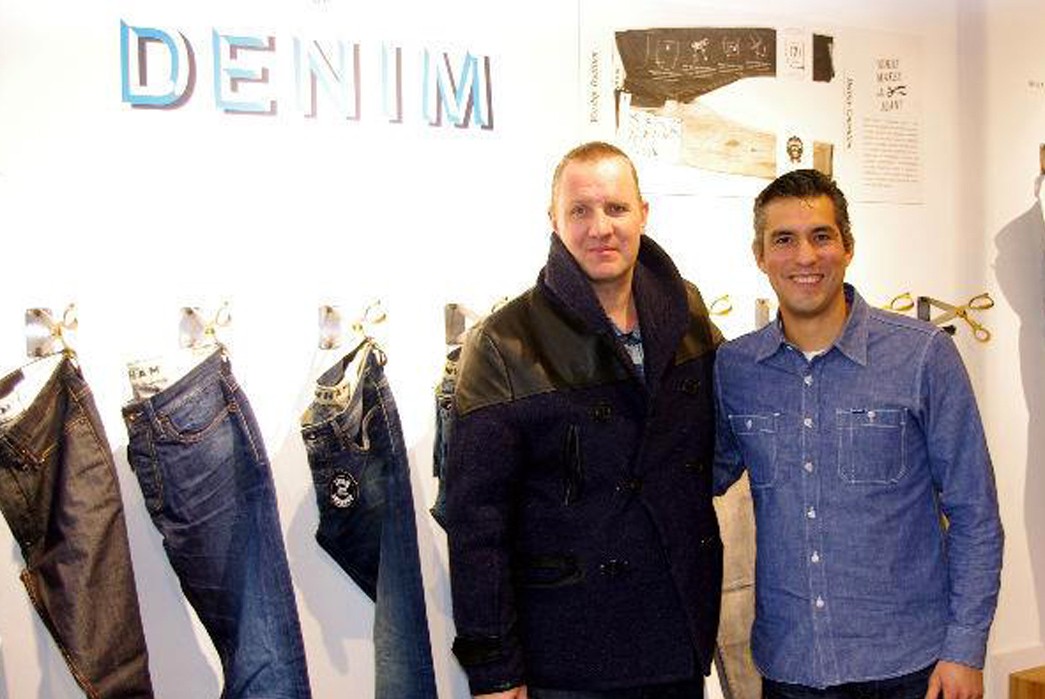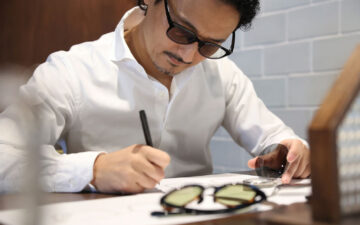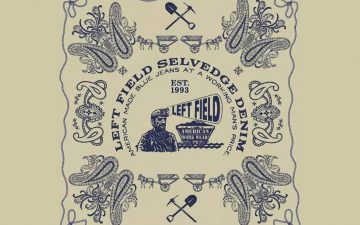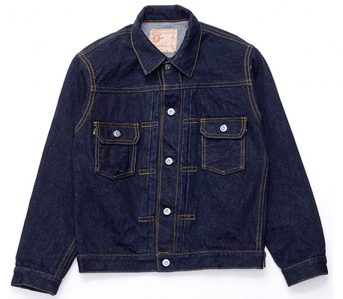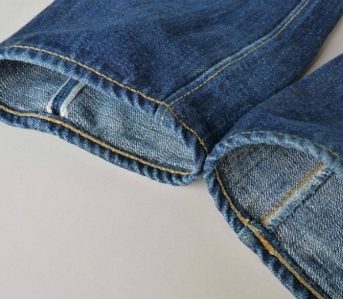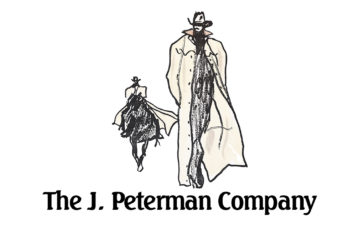Though just five years young, Denham Jeans has accomplished more in its short lifespan thus far than many other companies and brands hope to accomplish in a lifetime. By the numbers, their portfolio currently consists of four stores in Amsterdam, one in London, three in Japan and 500+ stockists across 25 countries. Indeed, the Dutch brand has positioned as one of the most strongest labels in Europe.
Based in Amsterdam, Netherlands, it’s their personal vox populi that their city is the world capital of jeans, and they might not be wrong either. The city is home to major offices and flagship stores of some the biggest denim brands in Europe, and this well-earned reputation has also attracted several big denim brands from the US.
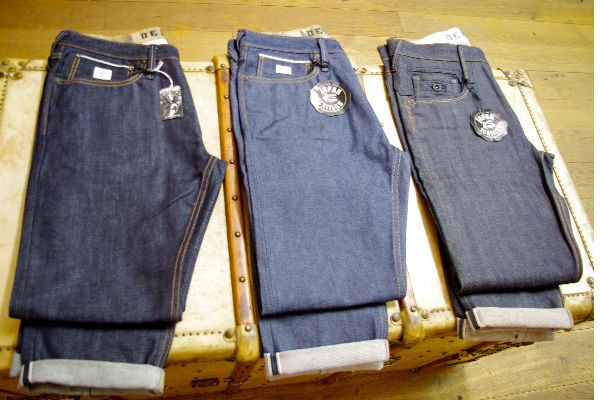
Denham Jeans New Raw Denim Lineup
The individual behind it all is Jason Denham. Among a few interests, he’s an avid collector for all dry denim related items, old indigo-dyed pieces, tailor scissors and the most flamboyant memorabilia. Prior to starting Denham, he honed his trade and expertise with Pepe Jeans London – which initially brought him to Amsterdam – whereafter he launched his first denim brand, Blue Blood, in 2002.
By the time 2008 rolled around, however, he was ready to embark upon another journey and create his own signature brand. With this new endeavour, his vision was to create a workwear denim that held an appealing mix of modern and heritage.
We had the opportunity to catch up with the founder at his studio and learn more about his experience in Amsterdam, the direction and foundation of Denham, and what he has planned next.
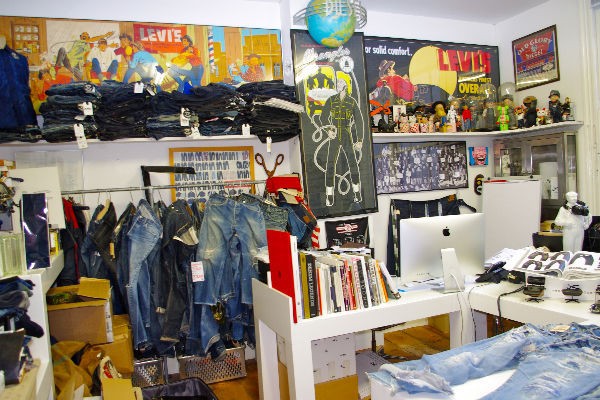
Jason Denham’s office: jam-packed with denim memorabilia
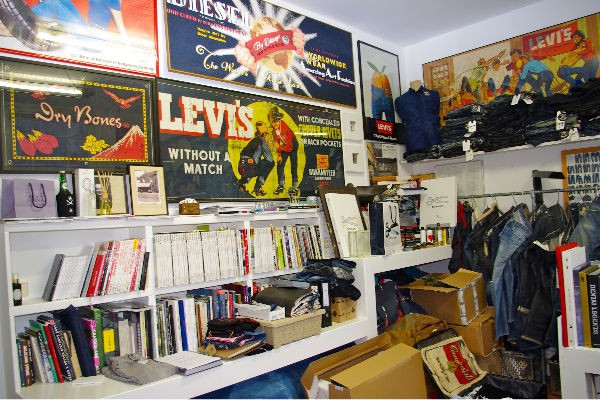
Denim gizmo and gadgets galore
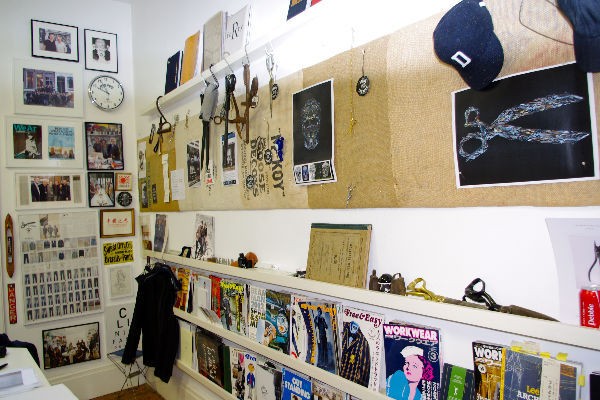
Denham’s collection of various publications from over the years
Heddels: What is the significance of raw denim to you?
Jason Denham: For me, raw denim, or “virgin denim” as we call it, is the most important denim product since you gain the best wear in natural patron. As the main component of a great product is good materials, the most important thing then is the fabric. Of course there is the design of the patron and the way they you build it, but the fabric is the start of everything. When you start when a beautiful raw or virgin denim and wear it naturally, you will gain the best results possible.
RD: Where did your passion in raw denim begin and what is it about the concept & textile that inspires you?
JD: I always had a passion for raw denim I think. My first visit to Japan was about 20 years ago and while being there, I discovered raw denim and just fell in love. It definitely helped that the Japanese market is one of the most educated denim markets in the world and they have, I think, some of the best materials, some of the best denim. European denim is getting stronger and stronger all the time, U.S. of course as well, but Japanese denim is something very special; especially in the raw selvage kind of fabric.
RD: How is Denham breaking the convention of denim and pushing the boundaries of innovation?
JD: I think we always do things a little bit differently. We love and respect the history of this industry which is just incredible. I’m a big collector and student of all of this, but I don’t like to copy it, I don’t like to replicate what people already have done, and I want to do things a little bit different.
So, we’re constantly looking for new ideas on how we can push the design a little bit further. It’s all about doing it with a level of taste and a level of balance. I think if you push denim too far, it can look terrible. But if you get the development right at a few details, then you can definitely do something which makes an exiting product and result.
RD: You recently said in an interview that you feel Amsterdam is the “real denim capital of the world”. What is it about the city that appeals to you and separates it from all other “denim hubs”?
JD: I think that the whole thing about Amsterdam is it’s a real jeans culture. When I first moved to Amsterdam I realized that people are wearing jeans all day long. Dutch people eat jeans for breakfast, lunch and dinner. It’s just the culture and lifestyle, it’s what people do here.
Holland is the most educated jeans country in the world. If you look for example at the independent stores and the jeans boutiques, they all have a good knowledge about denim. Amsterdam has a massive jeans culture, people are jeans lovers, and in my opinion probably more than other city in Europe. Definitely a hot spot right now.
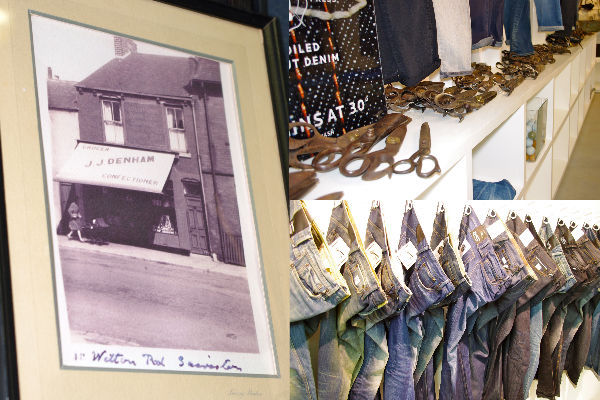
Clockwise from left: 19th century picture showing one of Denham’s ancestor’s retail front, tailor scissors collected from around the globe, rack of faded Denham Jeans
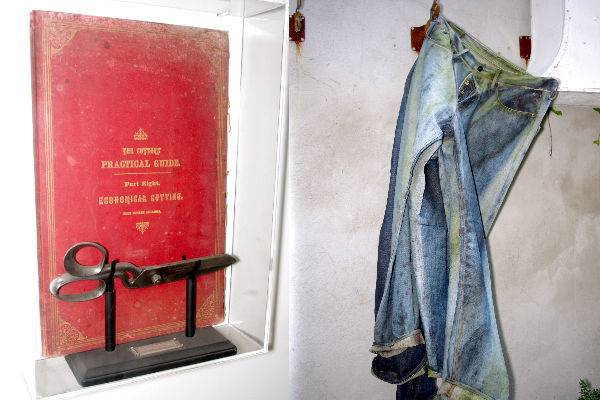
Andy Warhol’s scissor (L), experimenting with indigo
RD: How do you decide where to source your fabrics – e.g. Japanese versus Italian – and how does it affect your decision making during the creative process?
JD: I use a lot of fabrics from Japan and Italy, and a little bit from the US. I think it’s important to always keep looking for what is out there in the market, but it’s also very important to establish a good relationship with very good mills. We are very careful to work with denim mills who are following sustainable and responsible working practices – that’s one of the things that is very important today.
Thus, we’re starting to look more now for textiles which have sustainable qualities such as recycled yarns or organic yarns. But really the first thing we look is quality, that’s the first thing we go for. When we are making an unwashed raw/virgin jean, 90% of what we do in that area is Japanese because I think they have some of the best denim.
But again, things are changing. We’ve used a nice Italian denim and the U.S. of course have Cone Denim which we’ve also used in the collection. In terms of color, the Italians are the more creative with indigo shades. Italian is better for washed and Japanese for raw.
RD: Can we expect a big expansion to North america in a short future?
JD: North America will happen one day, but I can’t say when. Our business focus today is very much in the north of Europe. Amsterdam is of course our home, so The Netherlands is a very important market for us, but we are very busy in Germany and the UK, and busier and more active than ever in Japan.
We plan to open a new store in February and another in March. We are planning to open 30 stores in Japan in the next 3 years, so we are expanding strongly there. The US will come, but we’re still working out the plans.
RD: In your opinion, what are the pros and cons of the American market for a brand like Denham?
JD: I think that the American market is a great market. Obviously it’s where jeans came from and that is an exciting thing. There is some amazing stores that we will love to be involved with and showcase our products in. The thing with the US though is that it’s a long way from here and is the land of service. It’s the place where you really have to be on top of it every single day to make your business work. Our team today is not big enough to look after the whole world.
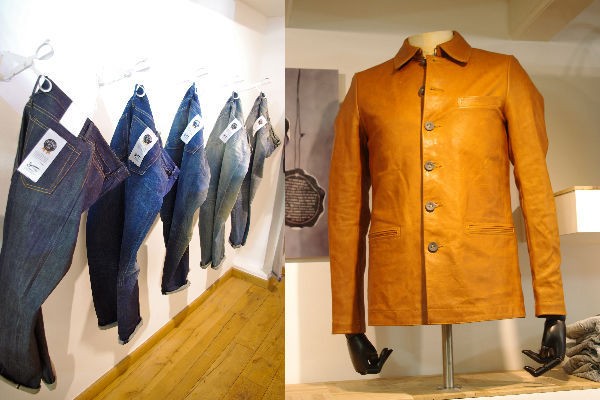
Denham new line-up (L), Danilo VTL leather jacket
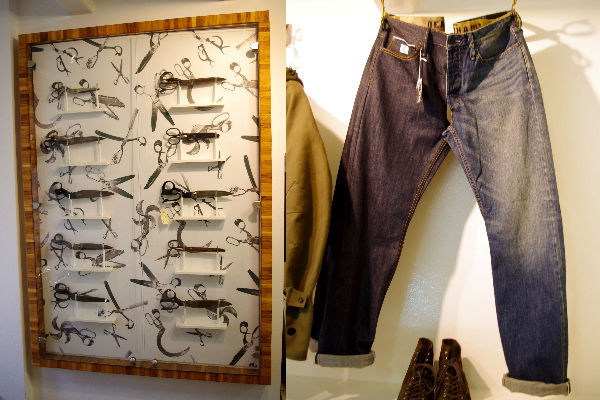
Tailor scissors at the show room (L), before and after illustration of fading potential
RD: Five years ago Denham started with a big heritage image, using vintage garments as inspiration and vintage fabrics as materials. What will the next source of inspiration be?
JD: We are looking now to do more creative things with materials. Heritage was a great trend to teach the consumer about quality, because it taught the consumer about great materials. But what we see now is that the trend is moving forward and is getting a little bit more modern and technical.
So what we are looking at doing is working with great traditional heritage fabrics, but with modern techniques of using them. Now we want to use techniques like bonding and machintosh. We are doing different techniques with materials, making them more modern by using tape seams, waterproof sealing and all that kind of stuff. We are also looking for special treatments on fabrics that can give them a more technical approach.
RD: What we can expect from Denham at the next Bread & Butter trade show edition?
JD: We are very excited about the next Bread & Butter because it’s the winter season and we can showcase more products. In terms of denim, we’re really gonna showcase this “Category 5” story in a strong way because this collection will be 1 year old in stores.
In terms of the collection, we’re gonna show the full story from men’s and women’s and our retail concept; how we like to present the goods in-store. The most important thing with our brand is product and presentation, and I think the presentation combined with a good product really showcases what you can do.
RD: Can we expect a collaboration?
JD: Yes, we are working on a few things at the moment. We have a few exciting projects which I can’t announce until they are all approved, but when they are ready, we will let you know first.
From a high level though, we are basically looking at projects that have to do with products in men’s design and women’s design. As well, we have projects related to presentation of design as well as filmmaking. We’ll keep you updated when everything is signed up.
A relentless denim enthusiast and visionary, Jason Denham possesses a near-pedantic attention to detail that has bolstered his brand into a remarkable position around the globe. To learn more about his company, Denham, visit their website.
